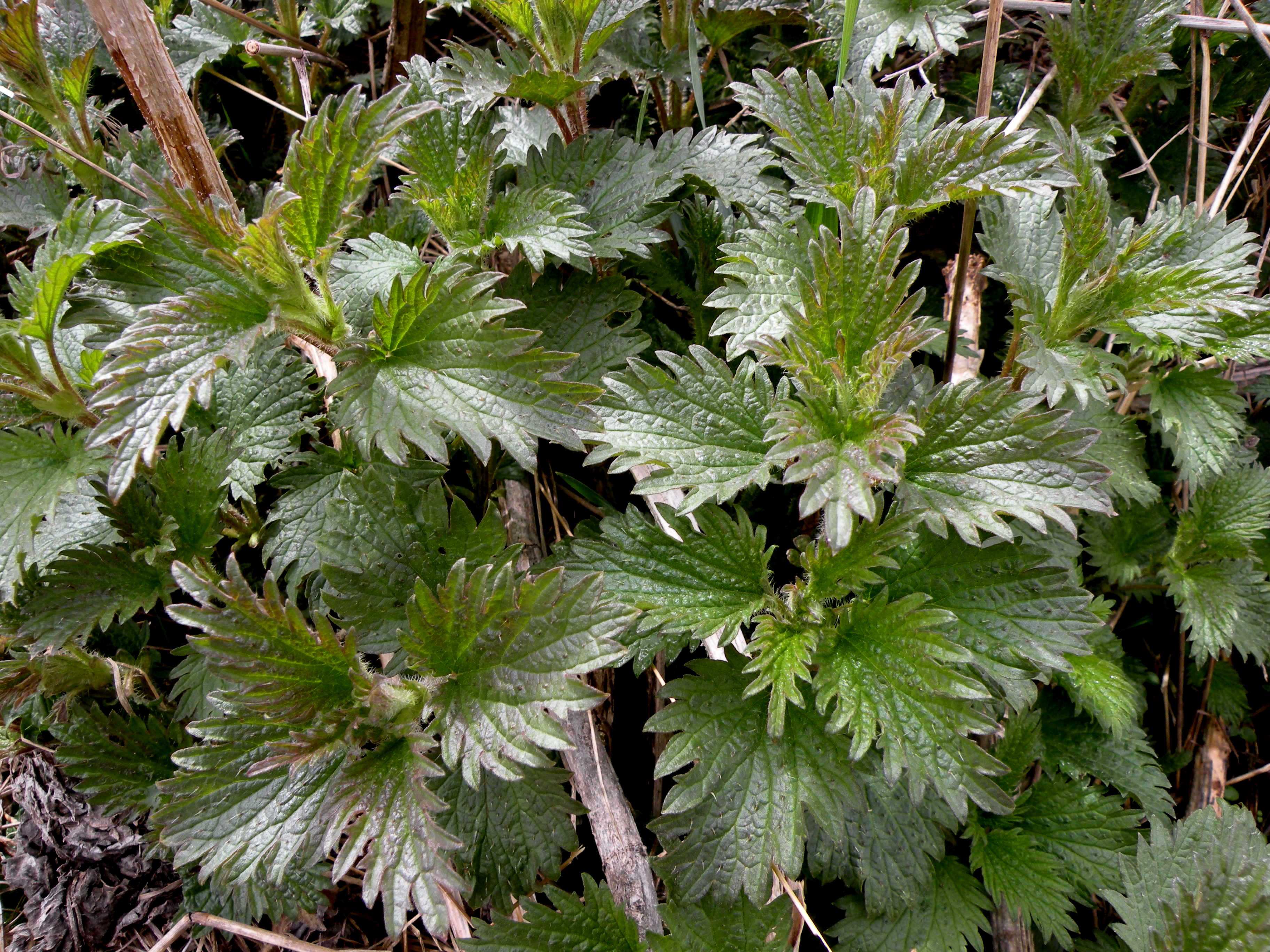
Stinging nettles tickle your tongue
Block title
 By: Ylva LekbergPh.D. Ecologist
By: Ylva LekbergPh.D. EcologistSpring is the season of rebirth, and yellowbell flowers are a colorful sign of a new year’s growth. While these flowers warm my heart, I have been on the look out for something entirely different — stinging nettles (Urtica dioica). Their stinging hairs of histamine are a nuisance for hikers and animals alike. Nettles have a long history as a food source for humans — they are rich in iron and vitamins, and can contain 10 times as much protein as spinach. Nettles also have medicinal value, and have been used to treat ailments from dandruff to rheumatism. (http://en.wikipedia.org/wiki/Stinging_nettle).
Stinging Nettles by Jeff Clarke
In my native Sweden, we relish the soup of nettles as a spring delicacy. In the US, nettle soup on a menu draws suspicious looks. The first nettles to emerge on the ranch grow up the creek in Partridge Alley, and last week I went armed with a plastic bag and gloves. The plants were two inches high already, so I carefully picked their tender leaves. A quick rinse and a hearty boil removed the stinging chemicals.
This soup is easy, nutritious, and quick to make. Saute onions and garlic in butter until golden, then add an equal amount of white wine and nettle water and simmer for 5-10 minutes. A little seafood bullion enhances the already rich and slightly marine flavor of the nettles. Add the nettles to the broth and blend until smooth, finishing off with the addition of some anise-infused cream.
For myself and many Swedes, spring begins with a bowl of nettle soup. Enjoy the riches of the land, and a Happy New Growing Year to all locavores!

About the AuthorYlva Lekberg
Ylva graduated from the Swedish University of Agricultural Sciences with a M.Sc. in Biology and Horticulture in 1996 and a Ph.D. in Ecology from Penn State University in 2004. She received the Alumni Association Dissertation Award for her work in agroecology and subsistence farming in Sub-Saharan Africa. Post-doctoral positions at Montana State University and later at Copenhagen University as a Marie Curie Fellow allowed her to explore the role of arbuscular mycorrhiza, a root-fungus symbiosis, for geothermal plants in Yellowstone National Park and coastal grasslands in Denmark. Her research has been published in international journals such as Nature Communications, Ecology Letters, and New Phytologist.
Ylva joined MPG Ranch in 2010. Since then, she has explored how invasive plants common to western Montana, including spotted knapweed (Centaurea stoebe), leafy spurge (Euphorbia esula) and cheatgrass (Bromus tectorum), influence soil microbial community composition and function, and how this in turn may affect invasive success. A lot of her research also focuses on the AM symbiosis in terms of community ecology and physiology. A current project addresses how exchange ratios in this symbiosis may differ among co-occurring plants and depend on soil nutrient availabilities. She uses surveys, field and greenhouse experiments, and literature approaches such as meta-analyses to address questions. To learn more about research and publications from Ylva and her group, see CV below and the Soils, Plants and Invasion section.
In addition to her work at MPG Ranch, Ylva is an adjunct professor at University of Montana at the Department of Ecosystem and Conservation Sciences.
Ylva joined MPG Ranch in 2010. Since then, she has explored how invasive plants common to western Montana, including spotted knapweed (Centaurea stoebe), leafy spurge (Euphorbia esula) and cheatgrass (Bromus tectorum), influence soil microbial community composition and function, and how this in turn may affect invasive success. A lot of her research also focuses on the AM symbiosis in terms of community ecology and physiology. A current project addresses how exchange ratios in this symbiosis may differ among co-occurring plants and depend on soil nutrient availabilities. She uses surveys, field and greenhouse experiments, and literature approaches such as meta-analyses to address questions. To learn more about research and publications from Ylva and her group, see CV below and the Soils, Plants and Invasion section.
In addition to her work at MPG Ranch, Ylva is an adjunct professor at University of Montana at the Department of Ecosystem and Conservation Sciences.




















